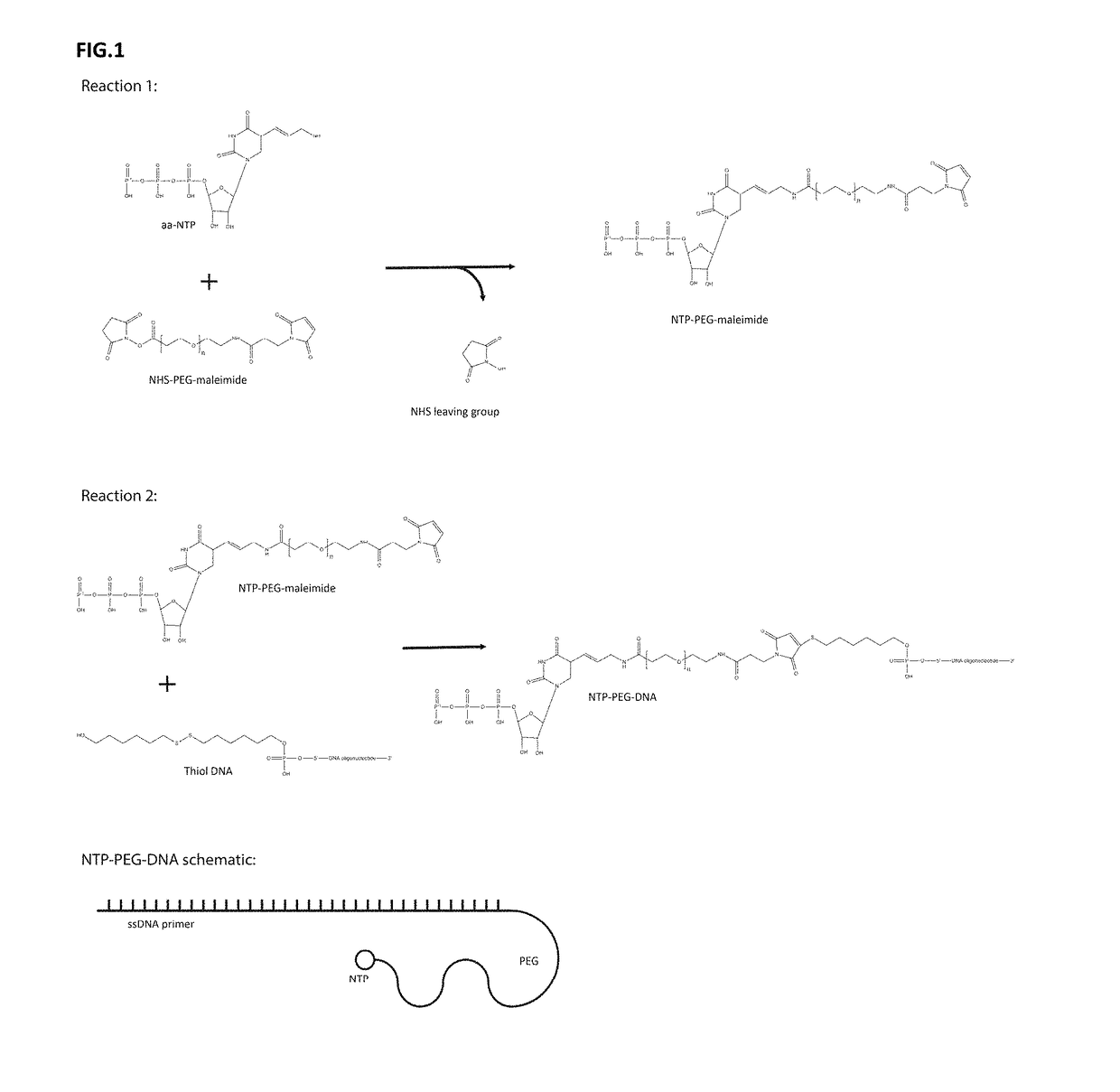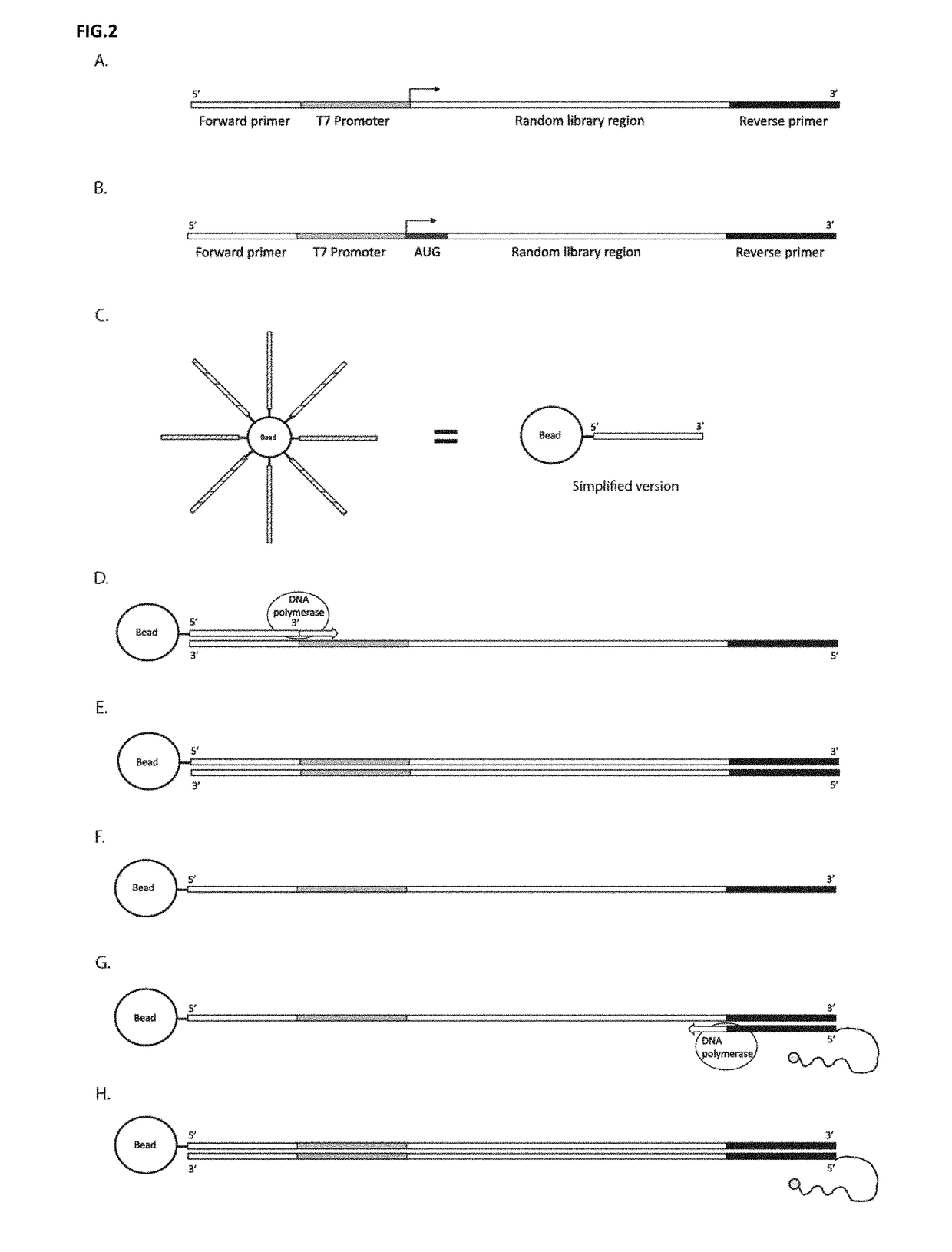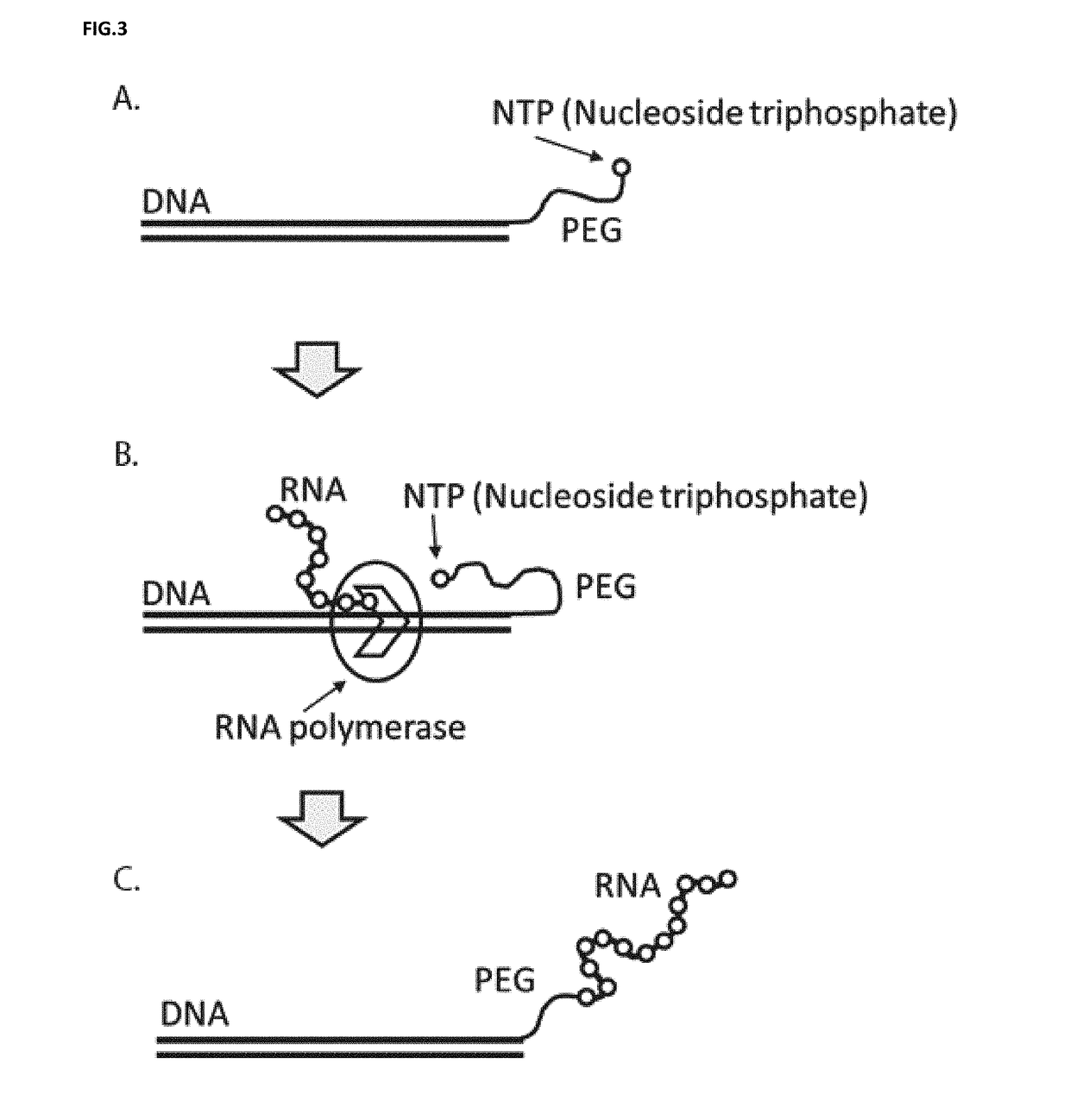DNA display and methods thereof
a technology of dna and display platform, applied in the field of display platform, can solve the problems of increased steric hindrance, inability to covalently display cis, and limited library size of the candidate organism, so as to facilitate the isolation of rna, reduce the loss of spatial information, and facilitate the effect of displaying speed and efficiency
- Summary
- Abstract
- Description
- Claims
- Application Information
AI Technical Summary
Benefits of technology
Problems solved by technology
Method used
Image
Examples
Embodiment Construction
[0085]Molecules that bind specifically to other molecules are essential for a plethora of biomedical and analytical applications, such as, therapeutics, diagnostics, laboratory research, and many facets of analytical sciences. The present disclosure provides a number of significant advantages. The present disclosure allows for repeated rounds of selection using populations of candidate molecules of considerable length. The present disclosure relates to a novel process of DNA display for the discovery and evolution of binding ligands for biomedical and analytical applications. These binding ligands includes, but are not limited to, nucleic acids or proteins (including, but are not limited to, antibodies, antibody fragments, peptides, polypeptides). Besides selecting for binding ligands, DNA display is used to select for and improve catalytic activities including, but are not limited to, enzymes, ribozymes and aptazymes.
[0086]The disclosed DNA display is a process by which a link is m...
PUM
| Property | Measurement | Unit |
|---|---|---|
| length | aaaaa | aaaaa |
| length | aaaaa | aaaaa |
| length | aaaaa | aaaaa |
Abstract
Description
Claims
Application Information
 Login to View More
Login to View More - R&D
- Intellectual Property
- Life Sciences
- Materials
- Tech Scout
- Unparalleled Data Quality
- Higher Quality Content
- 60% Fewer Hallucinations
Browse by: Latest US Patents, China's latest patents, Technical Efficacy Thesaurus, Application Domain, Technology Topic, Popular Technical Reports.
© 2025 PatSnap. All rights reserved.Legal|Privacy policy|Modern Slavery Act Transparency Statement|Sitemap|About US| Contact US: help@patsnap.com



